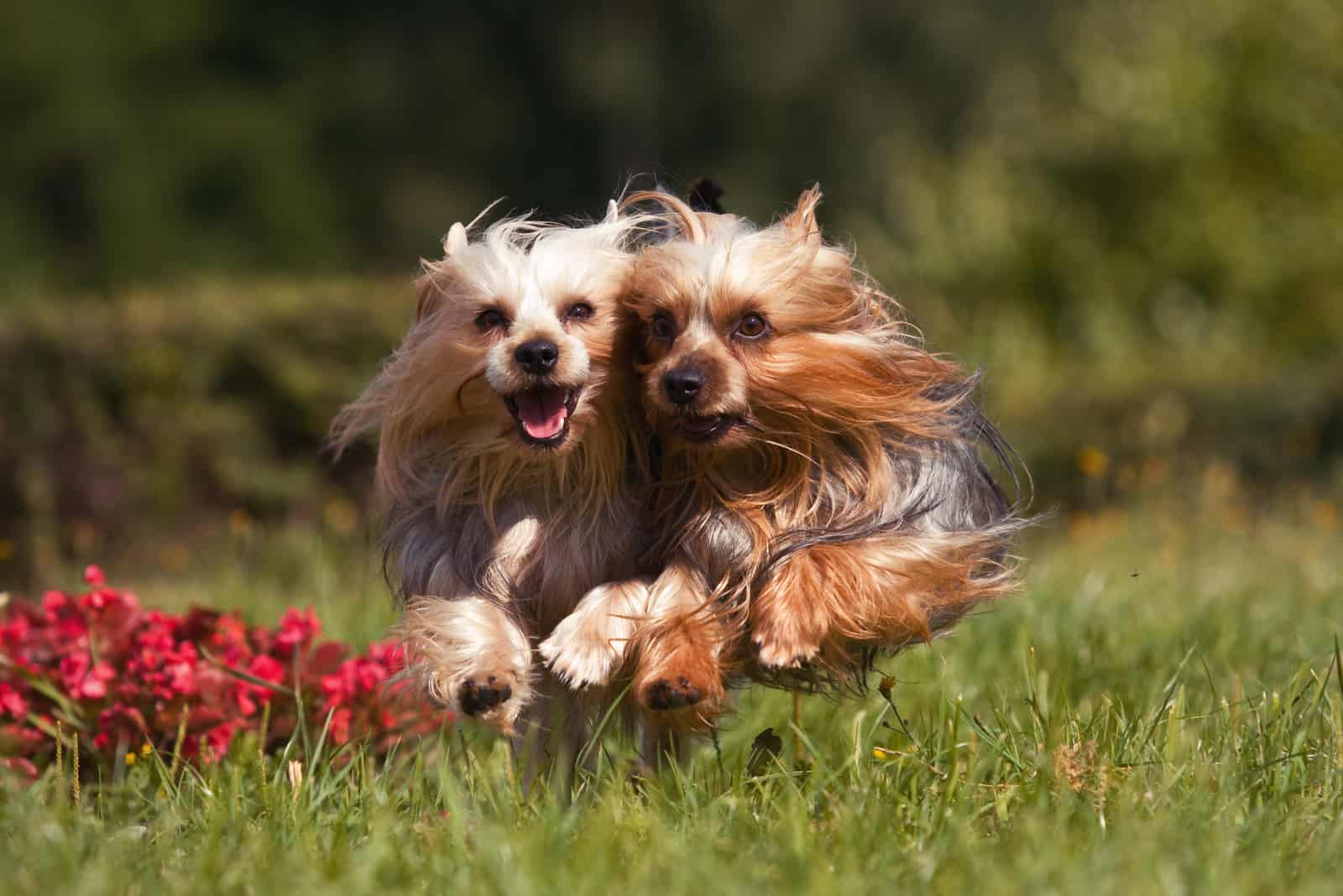So you’re thinking of getting a small dog and considering the Yorkshire Terrier. But you’re wondering which would be the best choice. We’ve put together a list of answers to a few of the most frequently asked questions about the Female Yorkie to help you choose.
Are Female Or Male Yorkies Better?
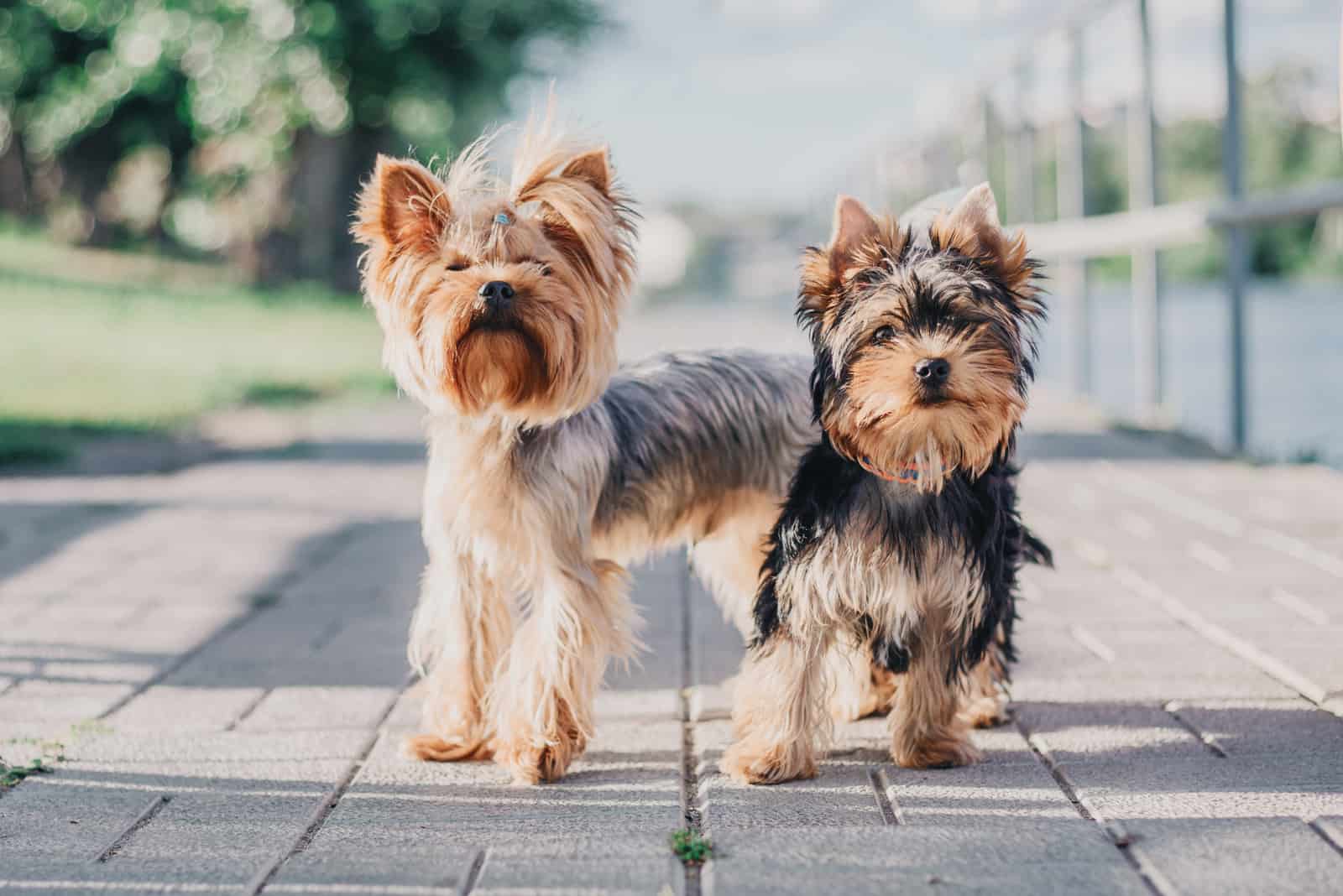
Let’s be clear – it isn’t really a battle as Yorkshire terrier puppies of either sex are equally adorable! When we look at male vs. female Yorkies, the decision will come down to personal choice and what your intentions are.
It may be that you really don’t mind which, but the points raised in this article might have some bearing based on your individual circumstances.
For example, if you want to breed Yorkies, then a male can be put to stud, whereas a female will provide several litters during her life. Therefore, the female could be seen as a better investment but will probably cost more in the beginning.
On the other hand, if you’re just looking for a new pet that’s a friendly, playful companion with a bit of character, then either sex will be fine. However, you need to take into account the potential health issues that each one faces and the need to consider spaying and neutering, along with the effects these might have.
Why Are Female Yorkies More Expensive?
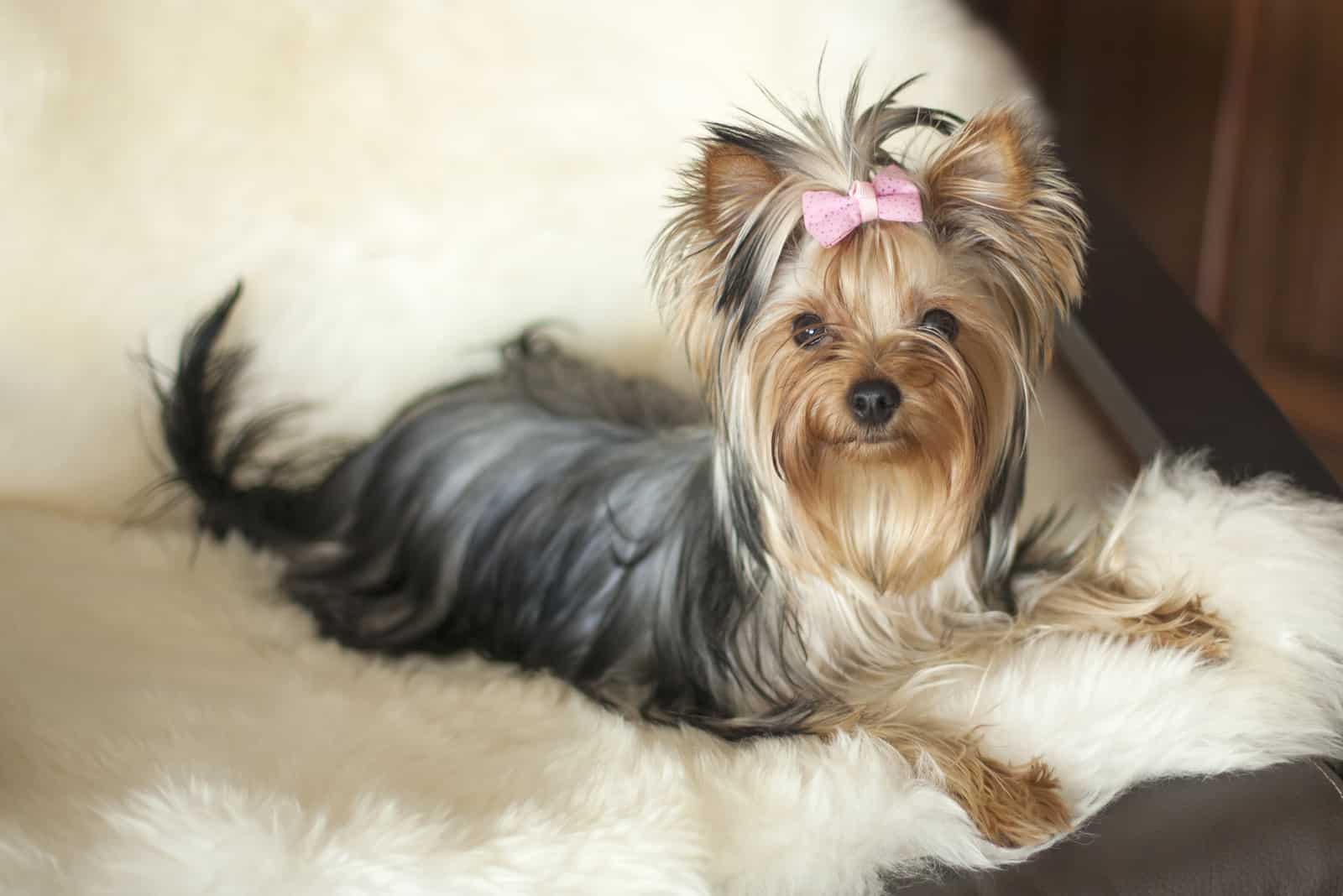
On average, you can expect to pay anything between $300 and $10,000. However, the price will depend on where you buy your Yorkie, as well as the sex of the dog you buy, as females generally tend to be more expensive. Keep in mind, though, that some breeders will charge more for males because of their pedigree.
A local breeder who doesn’t provide American Kennel Club ( AKC ) registration papers might charge between $300 and $800, whereas one who does provide papers will charge between $800 to $2,000.
A licensed breeder will generally charge more, starting at around $1,200 with a ceiling of about $2,000. And if you want a championship bloodline Yorkshire Terrier, then you could be looking at anything up to $10,000!
At the other end of the scale, if you’re just looking for an affectionate but feisty companion who will fit in your pocket, then a Yorkie from a shelter will only set you back a couple of hundred dollars.
There are a few reasons for females being more expensive, partly due to history and tradition and partly because of the rules of supply and demand. Also, and most importantly, there is the question of breeding potential. Finally, generalizations and misconceptions play a role.
In the past, females were highly prized as most dogs were kept to perform a specific task, often associated with agriculture or hunting. Many working dogs were killed while performing these jobs and had to be replaced quickly. If you owned female dogs, there was a good chance that they would have a litter of several puppies that would fill the gap when a dog was injured or killed.
As a result, female dogs gained a reputation for being more valuable, and this persists today. When this is combined with the unproven assumption that they are easier to train, less aggressive, and not as territorial as male dogs, it is no surprise that breeders have more requests for girl dogs than boys!
Breeding potential plays a big part in the higher cost of female Yorkies. Rightly or wrongly, they are used to make breeders a lot of money *. Unless you own a champion male Yorkshire Terrier, your male Yorkie won’t make anywhere near as much as a female, especially if she is a pedigree.
A female might produce several litters during her lifetime and is often seen as an investment.
*Ethical breeders channel much of the profit (though not all) into future breeding programs to improve and maintain bloodlines and the health of the litters. It is done for enjoyment and the love of the breed rather than for financial gain.
Read More: 10 Yorkie Breeders In Georgia: Yorkie On My Mind
How Old Does A Female Yorkie Have To Be To Breed?
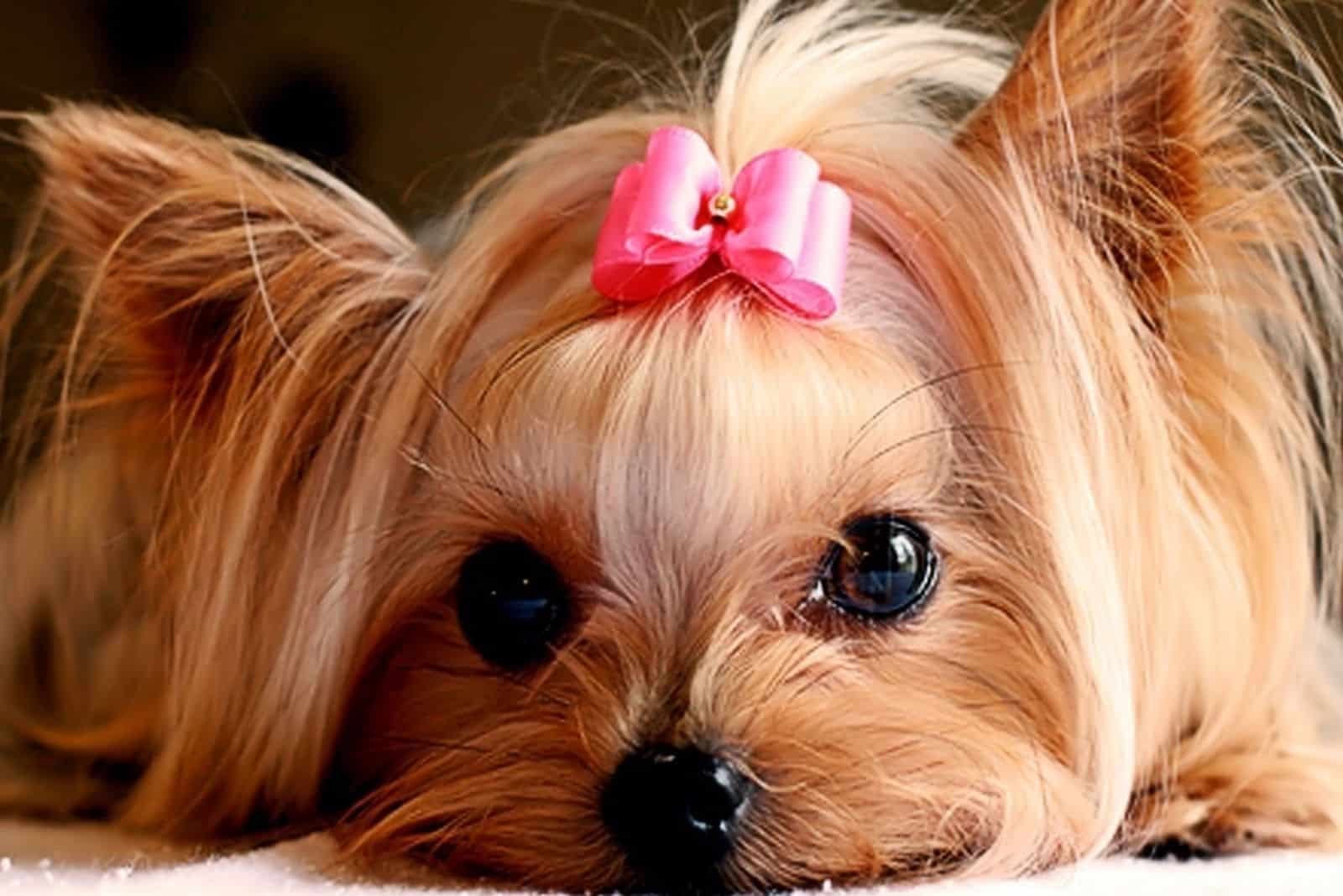
Female Yorkies are able to breed at only four months of age! Despite this, and the fact that a male Yorkie will produce sperm at six months old, it is not a good idea to allow them to breed at this young age.
The stresses that pregnancy places on the body could be too much, damaging them and potentially putting them and the litter at risk.
Also, as with all purebred dogs, Yorkshire Terriers can suffer from a range of inherited health problems. Many of these will not be apparent before the dog matures at around two years old.
The ideal time to breed a female Yorkie is between the ages of two and five, with a strong recommendation to never go beyond seven years of age. Surprisingly, Yorkies don’t enter menopause and are capable of reproducing in old age.
But doing so could cause complications that might lead to infections or the need for a C-section.
When Do Female Yorkies Get Their Period?
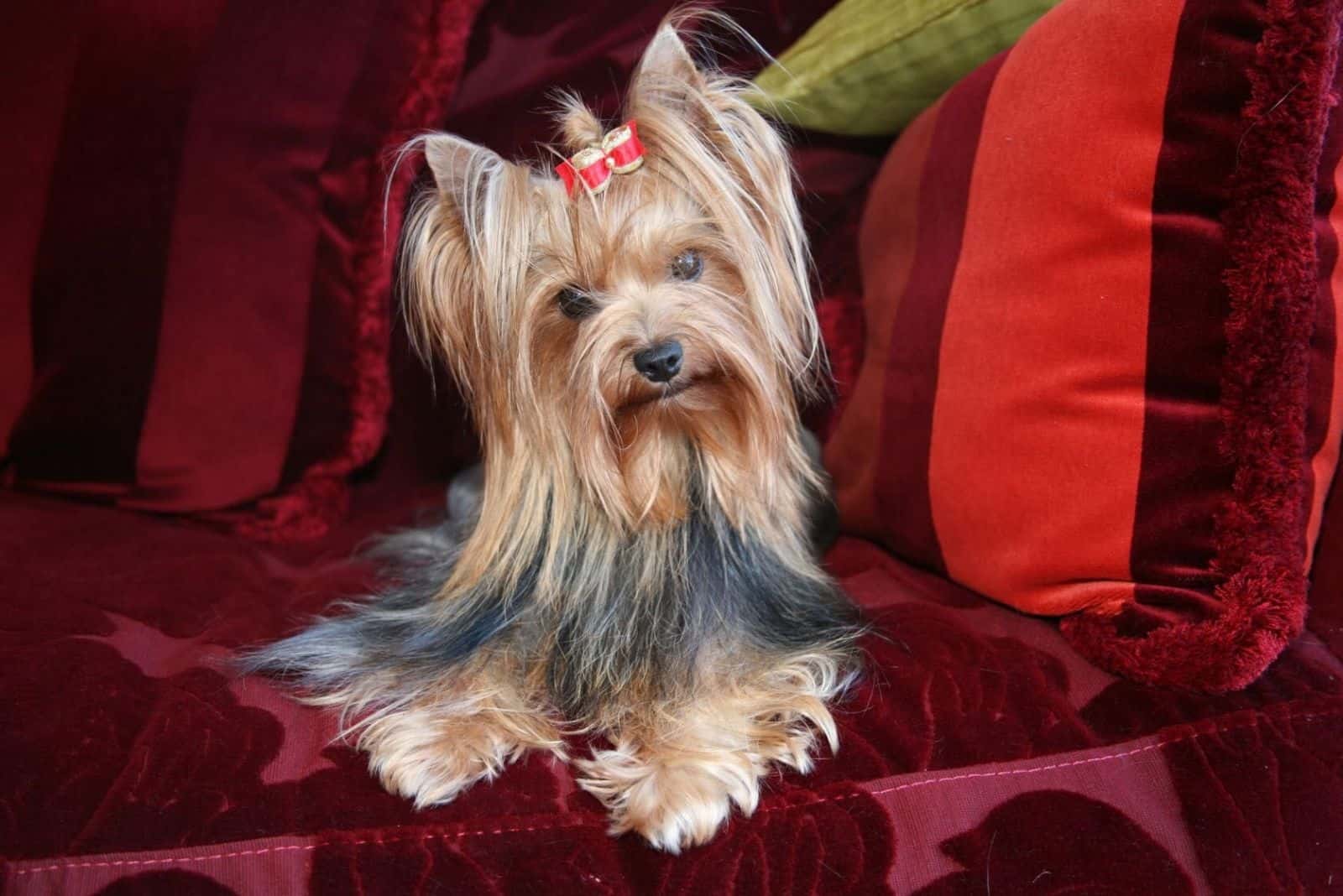
To begin with, the word period is perhaps misleading. Female dog menstruation is very different to that of female humans and is referred to as their heat cycle or estrus cycle.
In Yorkies, this begins at around four months but can be as late as fourteen months. If they reach fifteen months of age without any signs of the heat cycle beginning, they need to be examined for any problems.
Obviously, this only refers to unspayed, or intact, females. Spaying (and neutering for males) is often used as a way of reducing the behavioral problems associated with the heat cycle, as well as protecting your precious pooch against unplanned pups. It can also minimize the risk of certain health issues, such as uterine infections and cancers.
As mentioned earlier, they may display unusual behavior during the heat cycle due to hormonal changes. They could even become aggressive or violent at times, especially if there is an intact male in the home! If this is the case, try to keep them apart as much as possible.
There are several other signs that she is in heat, such as the nesting instinct, where she will build a safe place in a closet or under a bed and fill it with blankets or any fabrics or soft toys she can get her paws on. She may also clean herself excessively.
She may become moody, either seeking more attention or retreating to distant corners. You may notice a change in appetite, either eating more or less. The vulva will also change color and become swollen, and you could see drops of pinkish-red discharge.
Small dogs generally don’t produce as much discharge, but this doesn’t mean that you’re okay with it spoiling your rugs and sofa covers. Small drops can be cleaned with a baby wipe. Hygiene products, such as doggie diapers, can be used to stop any accidents.
It can be a trying time for her, so give her space when she needs it but also make sure you give her extra cuddles when she comes for them. And if you suspect anything is wrong, don’t delay in contacting the vet for a checkup.
How Long Does A Female Yorkie Stay In Heat?
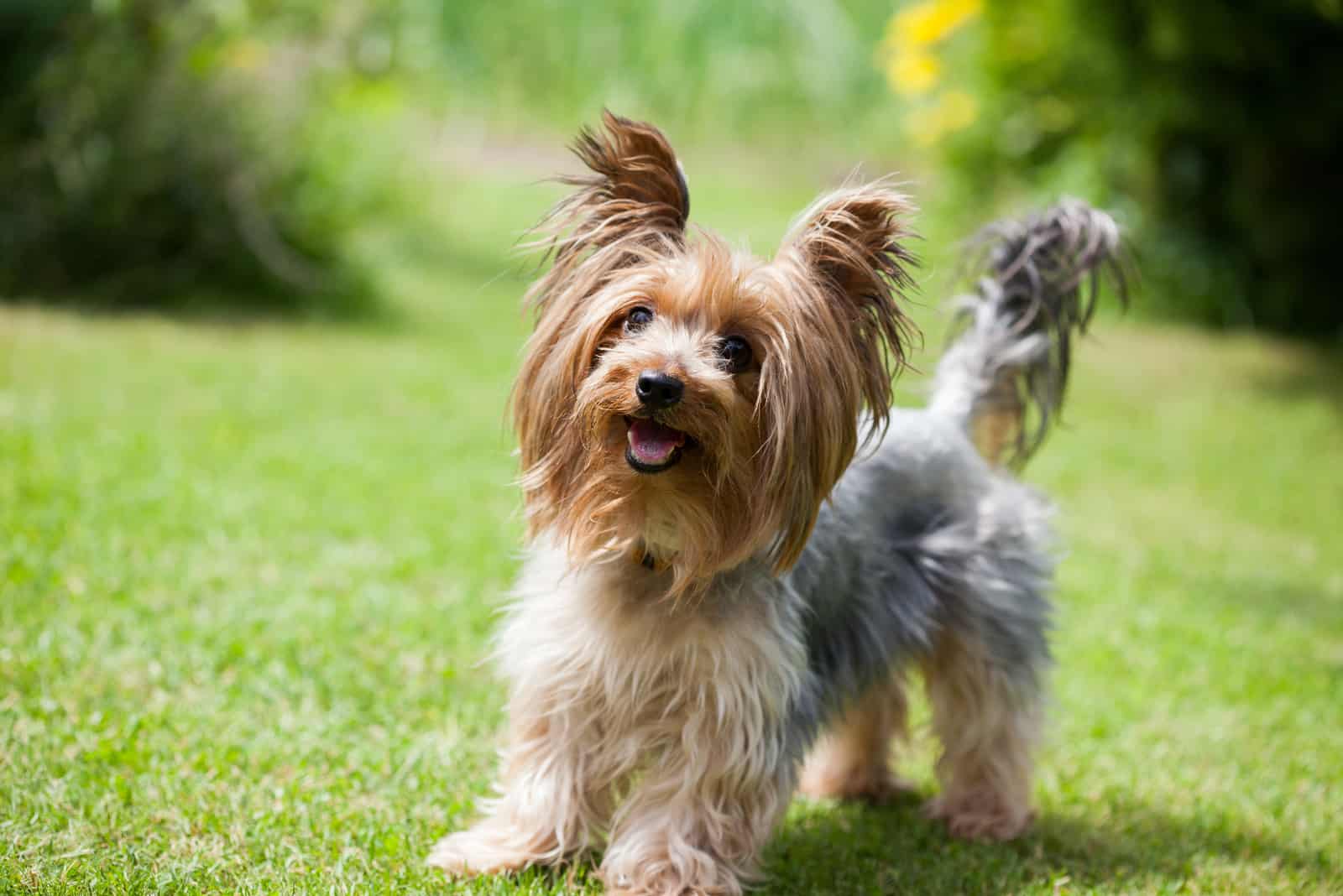
The heat cycle will happen roughly twice a year or every five to eight months. Each cycle will usually last between two to four weeks. There’s no way of predicting the length based on the previous cycle. The first one might last three weeks, while the next could last two weeks. Some dogs will have a regular cycle of two weeks throughout their life, while others could vary dramatically.
While they are in heat, your pup will be producing pheromones that male dogs will be able to detect from as far as three miles away! You might even notice strays or escaped dogs belonging to neighbors hanging around outside your home.
It is essential to keep her safe during this time. Never let her out in the yard alone, as there is a chance that larger dogs may get in and harm her. You may also end up with an unwanted mixed breed litter.
Unless you are planning to breed your Yorkie, the best advice from vets and dog experts is to have them spayed.
Obviously, the heat cycle is not a concern with male Yorkies, which could be a factor when choosing which one to go for.
Why Is My Female Dog Leaking Urine?
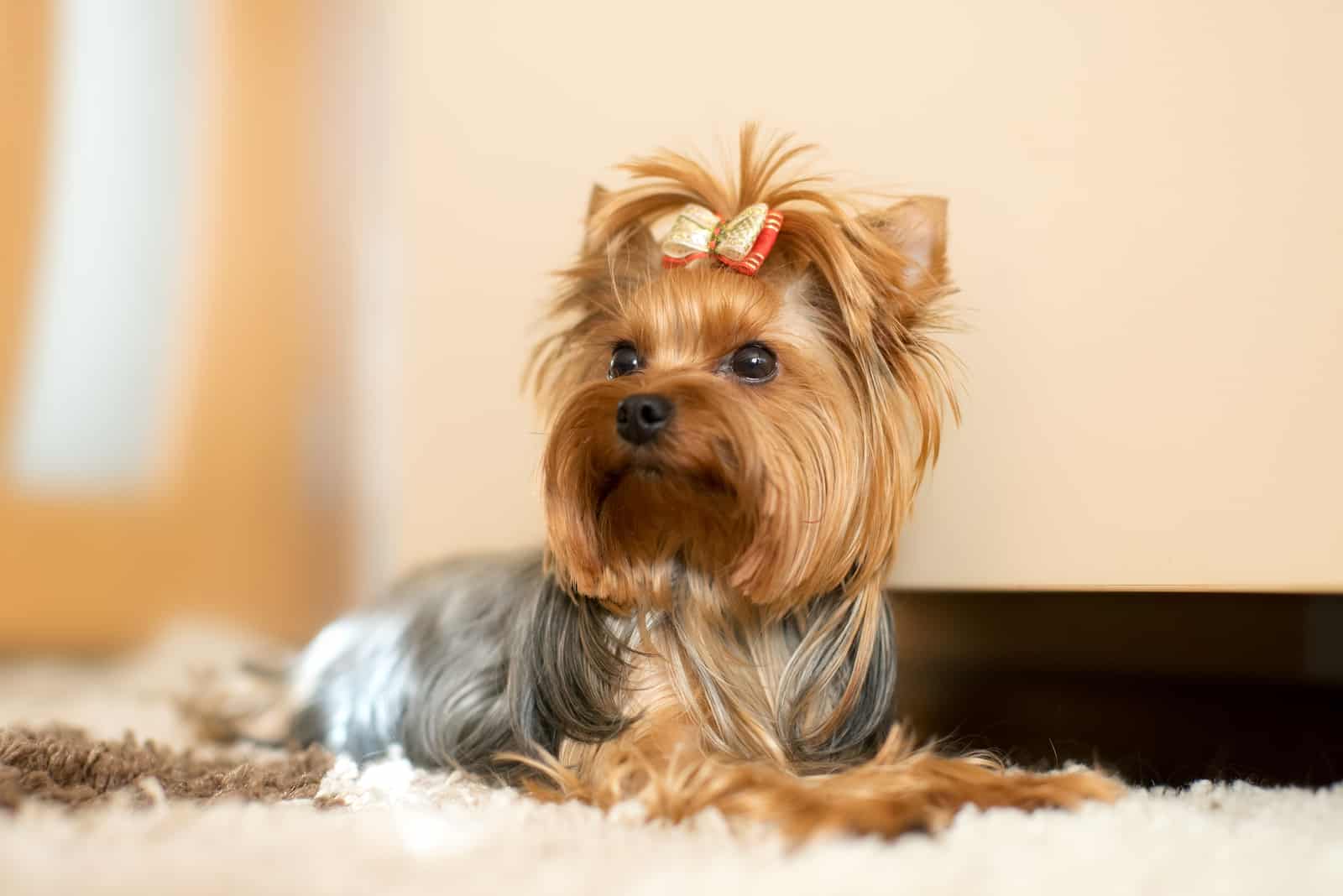
This is a common problem, usually in older, spayed females. It can range from a few drops here and there but sometimes can involve quite a lot of fluid. The important thing to remember is that it is not intentional, so no amount of training or shouting will stop it.
The main cause of this problem is a lack of estrogen due to the dog being spayed, but obesity and age are also contributing factors. Estrogen plays a role in strengthening the muscles that control urination. As the dog ages (especially when spayed), she will lose some control over these muscles, allowing the urine to collect in the vestibule area. When she moves around, the urine can leak out, usually when she lies down.
Other causes of leaking urine include kidney disease, diabetes, and urinary tract infection. If you notice a pool of urine in your dog’s bed when she gets up, or she leaks small amounts around the home, get her checked out at the vet. They will identify the problem and recommend a course of treatment.
For obese or overweight dogs, they will give guidance on the right amount of food. In cases where the lack of the hormone estrogen has caused the muscles to weaken, a special medication will be prescribed that improves the muscle tone.
It should be said that this problem can also affect older male dogs to an extent.
Are Female Yorkies Hard To Potty Train?
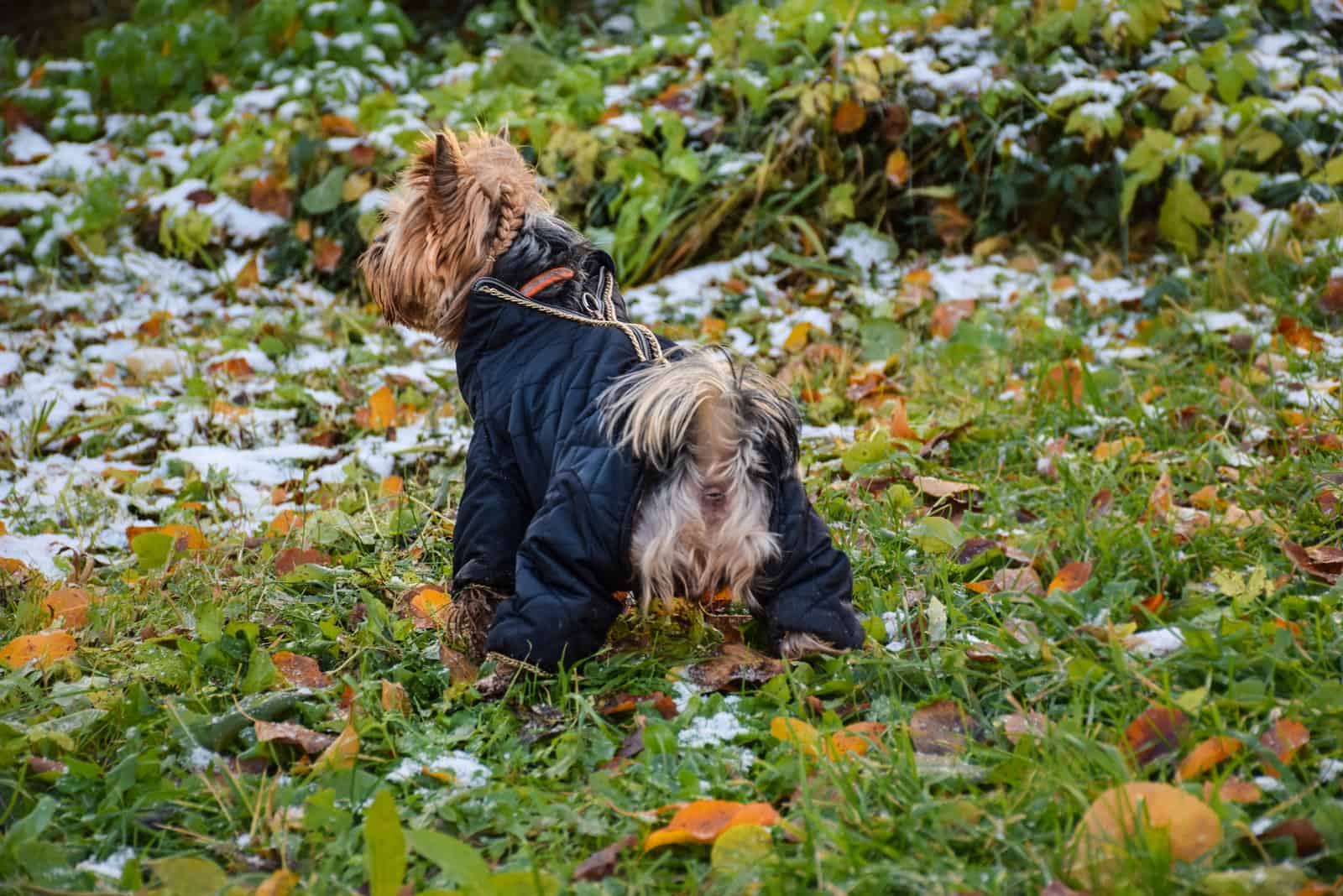
Yorkies have a reputation for being difficult to potty train, and there’s no reason to believe that females will be any more or less of a challenge than males. Yorkshire Terrier pups from a breeder might give you a head start here as they may already have been trained, saving you a lot of stress and effort!
Yorkies tend not to ask to go out to relieve themselves. You need to be alert to the signs and take them out at the right moment. They will let you pick them up and take them outside rather than walk, so don’t expect them to head for the door.
Crate training may seem cruel to some people, but it has proved to be effective in improving canine behavior problems pretty quickly. It provides a safe and secure space that contains the dog and stops them from peeing and pooping around the house while you train them.
Carry your dog outside to the same spot, making sure it is quiet and with as few distractions as possible. Get them familiar with an easy command that they associate with going to potty, and reward them when they comply. Avoid letting them go to the bathroom in the crate, but don’t get cross if you don’t catch them in the act, or you’ll just confuse them. If you do catch them, shout ‘NO,’ loudly and firmly.
With a bit of patience, you’ll soon get them used to the rules.
Is A Yorkie A Good Family Dog?
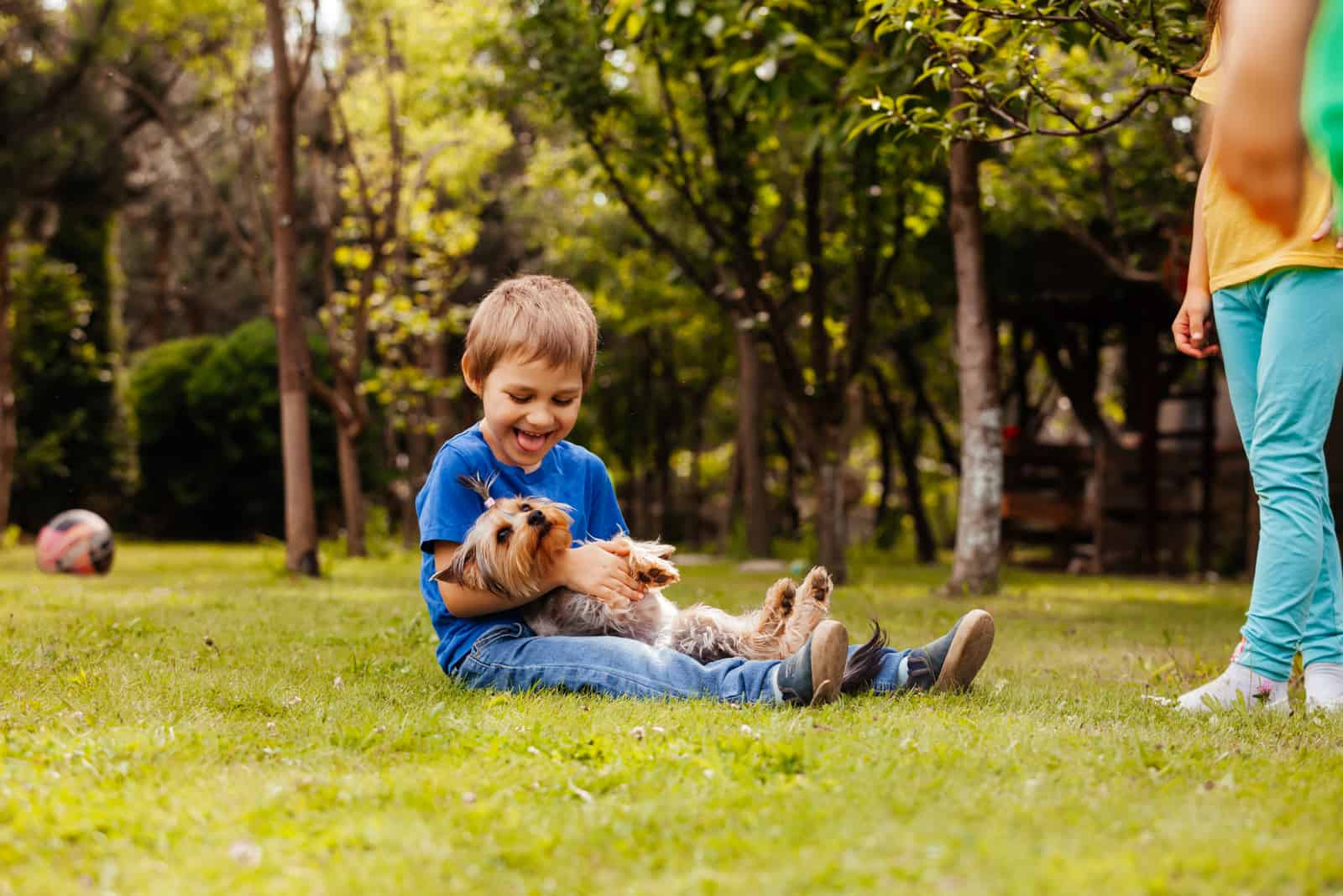
Overall, they make an excellent pet for most situations, whether you’re single, a couple, or part of a family with several kids. They’re often considered the best dog for first-time dog owners because they’re such a big personality in a small package that’s pretty easy to look after.
They fit in well with other family members, seeing you as the pack leader. Proper training and socialization from an early age will help this process, especially if there are other small pets at home.
For a small dog, it sure has a lot of energy! The Yorkie was originally bred for hunting rats and other small animals, though there is much uncertainty as to their origins. What we do know is that they used to be working dogs for the lower classes but rose in status to become a highly-favored lapdog of European high society.
They are loyal, friendly, affectionate, playful, and feisty, showing no fear when challenging dogs ten times their size if one should make them feel protective. It is this fearlessness and alertness that makes them good watchdogs.
Don’t be fooled by their small size when it comes to exercise. They still need a good thirty minutes walking or running around outside to use up all that energy. Having said this, they will enjoy short walks as they love to explore, so be sure to break down the exercise into a couple of outings a day.

Photo from @mustafagocek
They don’t take much grooming because of their size, although they will need regular brushing (daily if possible) to stop the long hair from matting, particularly around the face.
As with other small dog breeds, they have a longer lifespan, between 12 and 16 years. Females tend to live longer than males by an average of 1.5 years.
Whether male or female, they make an ideal family pet. There are subtle differences in character and behavior, and although each sex faces different challenges, some behavioral and biological issues can be overcome through spaying or neutering.
In the end, whether male or female, you’ll have a devoted pup that will love you unconditionally.
Read Next: Yorkie Feeding Chart: Everything You Need To Know About A Yorkie Diet


